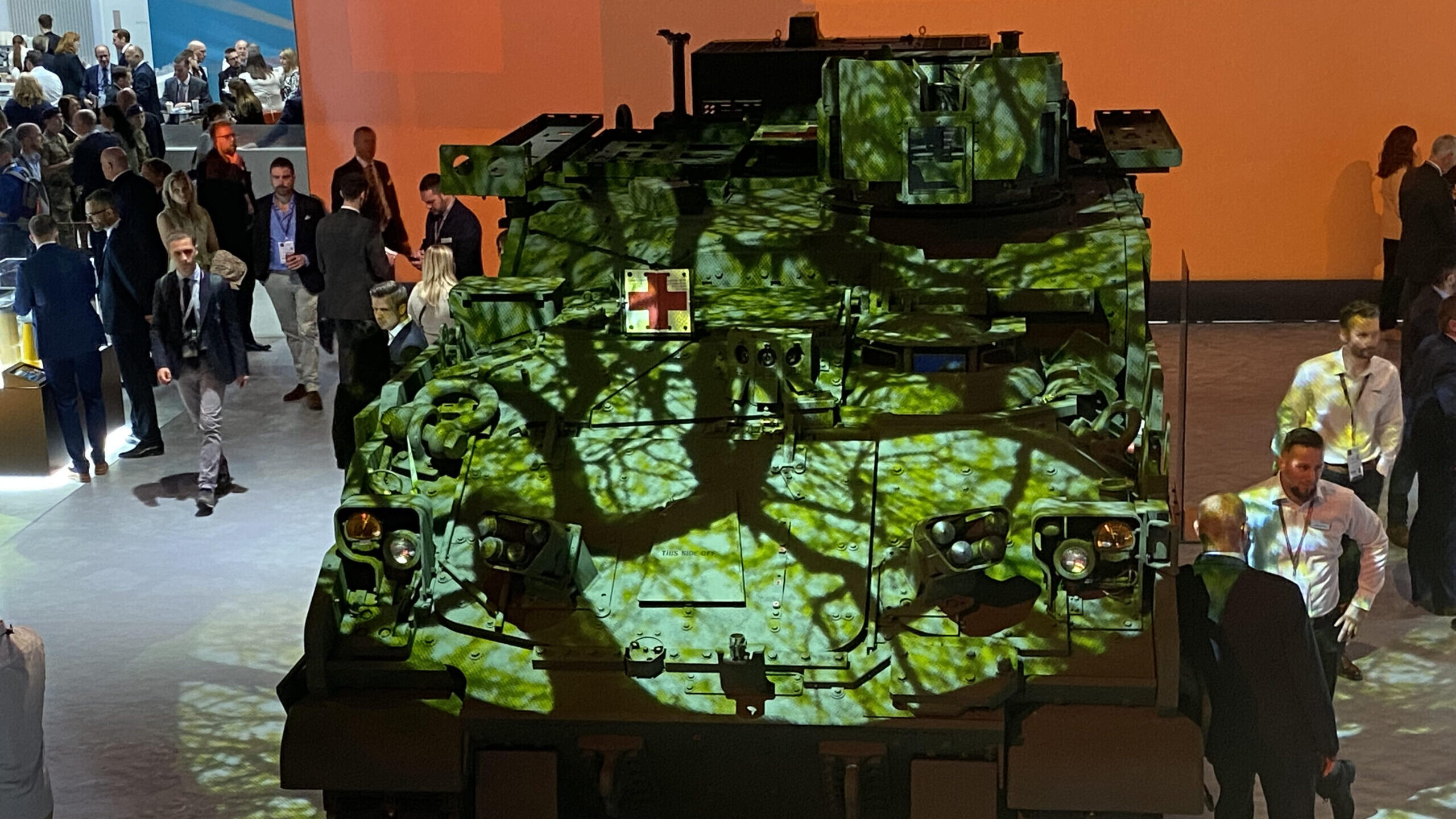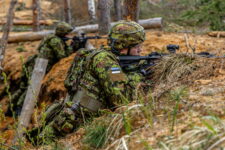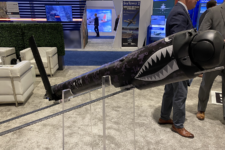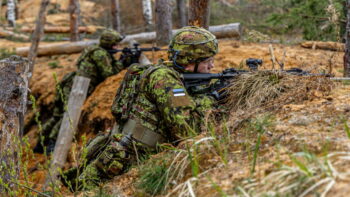
BAE Systems displays a US Army Armored Multi-Purpose Vehicle on the show floor in London at DSEI 2023. (Justin Katz/Breaking Defense)
DSEI 2023 — BAE Systems later this year plans to demonstrate for the US Army its ability to equip the service’s new multi-purpose ground vehicle with a 30mm turret it says is capable of fending off aerial drones, according to company officials.
Bill Sheehy, AMPV program director at BAE, said the company has used internal investment to modify a general purpose variant of the AMPV to be outfitted with a turret and that a November live fire test demonstration in Nevada will focus on defeating enemy UAVs.
He stressed that although the company has selected a turret for the demo, BAE remains “agnostic” about which gun would be used if the Army chose to move forward with developing another variant of the AMPV. Officials for the Army’s Program Executive Office for Ground Combat Systems did not immediately return a request for comment from Breaking Defense about the upcoming counter-drone demonstration.
FULL COVERAGE: Breaking Defense at DSEI 2023 in London
Currently, the AMPV comes in five variants: general purpose, medical evacuation, medical treatment, mission command and mortar carrier. The Army inked a $797 million deal with BAE in August following the decision to green light “full-rate production” for an unspecific number of vehicles. Full rate production is a Pentagon acquisition milestone signifying the Army is satisfied with both the vehicle’s design and the company’s production processes.
Sheehy said the company plans to finish “low-rate initial production” — the milestone that immediately precedes full-rate production — at the end of the next year.
“That is a huge signal from the Army, that they are committed to the program, that they are satisfied with all the requirements [and] that they want it in the field,” he said of the August contract award.
Counter-UAS capabilities have become more prevalent in recent years — a trend sure to continue given Ukraine’s successful uses of drones during its conflict with Russia — particularly among the Pentagon and the US military services. The Swedish arm of BAE Systems, whose parent company is headquartered here in the United Kingdom, has also been examining whether counter-drone equipment could be outfitted on its armored personnel carrier.
RELATED: As drone warfare comes to the fore, BAE sees counter-drone mission for its APC
Asked if the company was making a deliberate push towards proliferating the capability across its different vehicles, a spokeswoman told Breaking Defense, “Across our programs, we are always working to innovate to meet the needs of our customers.”
“As capabilities such as Counter-UAS are becoming a critical need in the battlefield, we are continuing to develop highly adaptable combat vehicles that are purpose-built for rapid technology integration,” she continued. “This ensures the warfighter maintains combat overmatch capability so they can safely complete their missions.”
Inside An Amphibious Combat Vehicle
Not too far away from where an AMPV was parked on the DSEI show floor, BAE also allowed guests to see inside the personnel variant of its Amphibious Combat Vehicle, which was developed for the US Marine Corps. That vehicle has four variants: personnel, command and control, a 30mm cannon and recovery — each of which are in different stages of development.
As the name implies, the personnel variant is built primarily for carrying Marines, accommodating a driver, commander, gunner and 13 passengers — a number derived to suit the Marine Corps’ rifle squadron size, said Garrett Lacaillade, vice president of amphibious vehicles at BAE.
Illuminating the interior vehicle was an egress light, which is switched on for guests but would otherwise be off until it is needed to alert the crew that its time to evacuate. The egress lighting gives the entire interior a green hue, a color choice specifically requested by the Marines.
Lacaillade said one of the unique design considerations for ACV was to mount most of the interior seating and floor to a frame wrapped around the inside of the vehicle and connected to springs. In practice, that means if an explosion took place underneath or near the ACV’s exterior walls, the springs would absorb most of the energy, keeping the vehicle’s occupants safe.
To date, BAE has delivered a little over 200 ACVs to the Marine Corps, largely personnel variants. Command and control vehicle deliveries are scheduled to begin in the next several months. The company is building test representative models of the 30mm cannon and the recovery variant, which will be equipped with a crane and a winch, remains in development, Lacaillade said.
As for the show floor ACV, it is not a prototype or used only for displays. Lacaillade said it is owned by the Marine Corps and will be shipped back to the service following DSEI for fielding to wherever it is needed next.






















